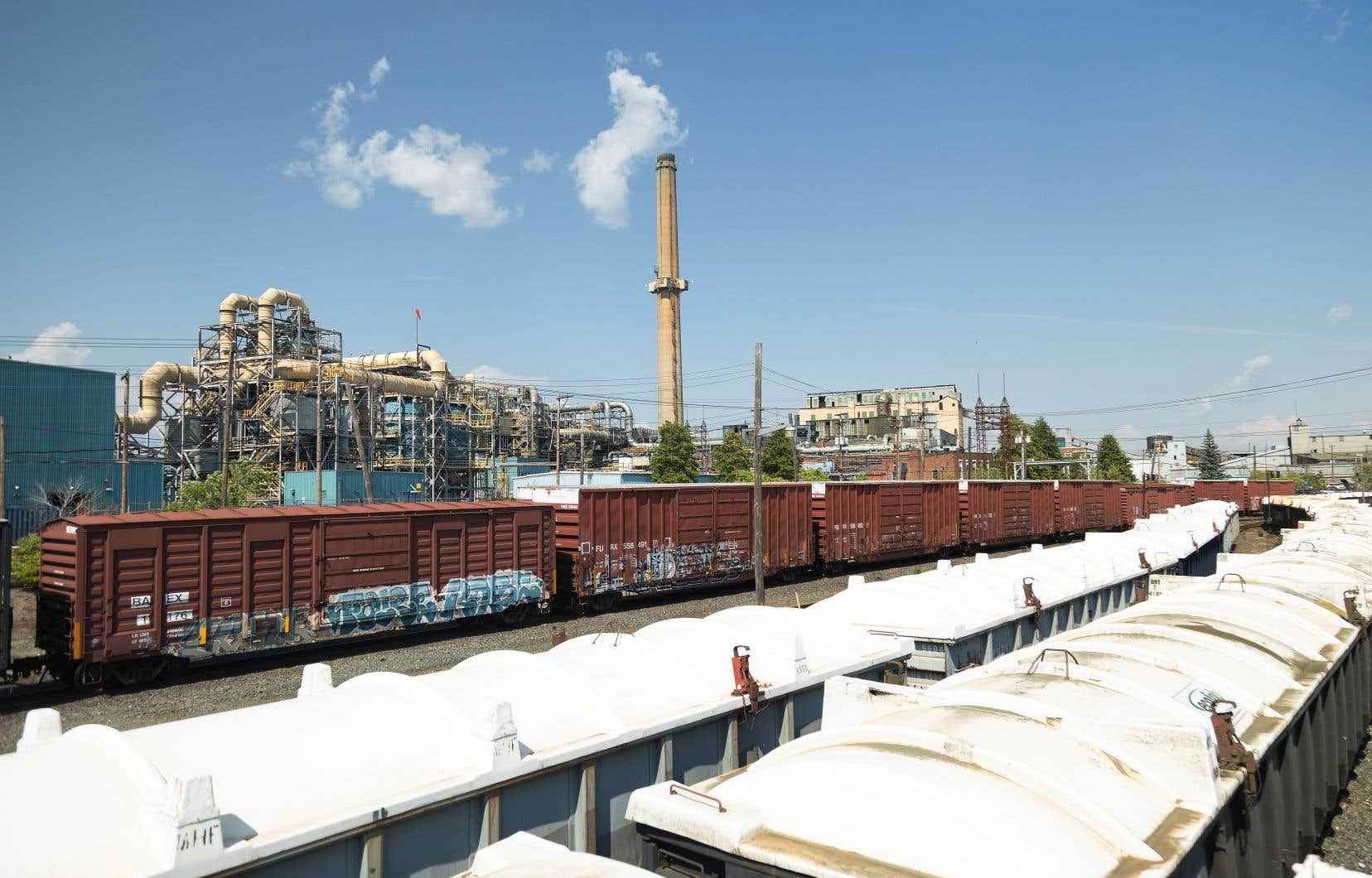Loved for its dollars, hated for its air pollution, the Horne copper plant divides the city of Rouyn-Noranda. However, voices are raised to prevent the debate from becoming poisoned in turn.
The Horne foundry dominates Rouyn-Noranda. Its pipes tower over the city and hundreds of paying jobs depend on it. The large letters of “Glencore” plated on the municipal arena recall the name of the owner of the factory. Rare are the initiatives that do not benefit from grants from this company.
Except that the purchased social peace crumbles. Recent studies link arsenic emissions from the smelter to lung disease.
Émilie Robert, from the environmentalist group Mères au front, jumped up when she read the so-called “biomonitoring” study from regional public health. “The concern has gone up a notch,” she said. The mother of the family acknowledged in the document all the health problems that afflict her children.
Her first daughter was born with low weight. She then moved to a village outside of Rouyn-Noranda, and her son was born there in perfect health. The latter has been going to a daycare center near the foundry for several years and has started to suffer from asthma. These health problems are exactly in line with the risks described by the local CISSS. More and more parents are speaking out against leniency towards Glencore. In early July, around 50 doctors signed an open letter demanding that the company comply with the standards. Some citizens have anonymously told the To have to having had to break friendships after heated exchanges on the issue.
“’It’s not as bad as it was’, ‘It’s always been the same’”, a pastiche of Émilie Robert, using the expressions of certain fellow citizens. “It’s not nothing, arsenic!” It is called the king of poisons. »
This heartbreak is not new. A few years ago, the poster “Rouyn-Noranda: the world capital of copper” at the entrance to the city had been vandalized. We could then briefly read “Rouyn-Noranda: the world capital of arsenic”.
Close the mine, close the town?
Faced with these activists, others insist on the benefits of the foundry. “There are still 600 direct jobs at the foundry, 1,800 indirect jobs. There is a whole engineering expertise that has developed from that, an expertise exported abroad,” noted the Chairman of the Board of Directors of the Center local de développement Rouyn-Noranda, Marc Bibeau.
“There is definitely a certain pride, and there are people today who are proud of it,” he adds.
Few Abitibians believe that the plant will close, as Prime Minister François Legault mentioned earlier this month. The cost associated with site decontamination is high. The foundry no longer supports the whole city, as in 1927, but it remains the engine of the municipality. Its loss would be as colossal as the height of the foundry chimneys.
The memory of the strike in the early 2000s has left a bitter taste here. The whole town lived for almost a year as if the foundry had disappeared. No one seems to want to relive this gloom.
“You can close the foundry for health issues, but that will lead to other health problems,” notes Marc Bibeau. Poverty, divorces, personal bankruptcies and all that ensues awaits the region, he says, according to this scenario.
But like all the Rouynorandians questioned, he is of the opinion that the pollution pass issued by the government is no longer valid.
“I think that, like any organization and as a citizen, we expect the government to do more. The foundry is expected to do more as well to [améliorer] its processes. I think they do a lot of research and development and they’ve proven that since the early 2000s.”
years of progress
To understand the progress made by the foundry since its beginnings in 1927, The duty met Georges Villemure, former supervisor for Glencore and retired after a long career in the mines of Abitibi-Témiscamingue
Son of a miner who died in his fifties “with dried up lungs”, Mr. Villemure claims to have “seen incredible changes” in a few decades.
“In the 1970s, people began to think about protecting themselves against dust. In the past, you had to fight for employees to wear masks. Today, young people demand to work with masks. »
Various citizens interviewed by The duty confirm this change in mentality between generations. “You get used to the smell,” said a resident who had lived near the foundry for decades. Young people do not hesitate to speak ironically of the metallurgical complex as a “breathtaking” neighbour.
A few years ago, not so long ago, dozens of men lined up at the unemployment office waiting for a job to become available. Today, each employee is counted for the foundry as labor is scarce.
This is why Georges Villemure believes that the health of employees and their families has finally started to become important for leaders. “If the guy stays alive longer, he works longer. It is financial management. »
“When we talk about the foundry, we are talking about a company that invests. Glencore people are not mining people. They are people from business. The foundry itself is not going to change. It’s the people who work at the foundry who make that change. »
In the past, the foundry released great puffs of sulfur that suffocated the city to the point of forcing people to barricade themselves inside. Since the end of the 1980s, the foundry has been recovering this sulfur to transform it into sulfuric acid.
The names of local chemists and metallurgists who are thinking about engineering solutions come up in the mining technician’s speech. “It’s more than a mine, it’s a community. The change will come from the community. […] We do a team. The foundry, you must not let them go. »
Representatives from the Horne smelter have agreed to meet The duty. The exclusive interview will appear on Wednesday.
